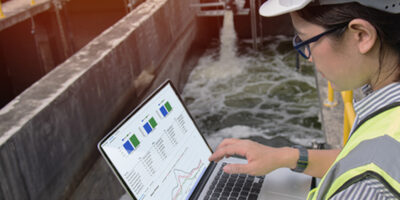Urbanisation is the challenge of the century. Climate change impacts, such as increased rainfall, flooding and storm surges, are putting a strain on urban water systems worldwide. Water infrastructure networks are expanding to meet demand, and more focus is placed on developing cohesive integrated urban water management (IUWM) strategies to ensure a more secure and resilient water future.
With dramatic water cycle changes expected in the coming years, traditional and fragmented approaches to water resources planning are simply not good enough. It is clear: only by integrating the management of source water, stormwater, wastewater and drinking water can city leaders, urban planners and water utilities address our urban water challenges.
Why implement integrated urban water management?
Just like people, when systems talk to each other, the outcome is almost always better. A policy brief by Global Water Partnership describes IUWM as an approach that integrates water supply, sanitation, as well as storm- and wastewater management with land use planning and economic development.
IUWM creates many benefits, including enhanced quality of life, improved resilience to climate change, optimised local economic growth and increased opportunities for water. In a world where water scarcity affects more than 40% of the global population, IUWM could be the answer to ensuring clean water and sanitation for everyone. The idea of IUWM also aligns with Goal 6 of the United Nations Sustainable Development Goals (SDGs). Specifically, target 6.5 of Goal 6 indicates the need for UN member states to implement integrated water resources management at all levels by 2030.
How to get started
If you’re ready to implement IUWM into your water management strategy, consider this process:

Step 1: Identify your challenges
Moving to IUWM is about shifting from managing water systems in isolation, to an integrated approach supported by all stakeholders. However, water managers often discover obstacles in their pursuit of IUWM. A paper by Mukheiber, C. Howe, and D. Gallet lists these five areas as potential barriers to successful implementation:
- Legislation and regulations
- Economics and finance
- Planning and collaboration
- Culture and capacity
- Citizen engagement
Which is yours?
Step 2: Evaluate and communicate possible solutions
Once you identify the problem, the next step is to explore possible actions and advocate the benefits to stakeholders. For instance, urban planners can help governments overcome fragmented legislation and regulations by communicating the links between policy planning with other sectors like infrastructure. Then, together, they select collaborative approaches that include all stakeholders defining priorities, actions and accountabilities.
Another example: if cost gets in the way of upgrading a wastewater treatment plant (WWTP), explore the possibility of creating a digital twin for it. Instead of adding costly new treatment tanks or absorbing the capital expense of plant expansion, a digital twin allows you to accurately simulate and test different retrofit options using your plant’s real-time information. This saves a significant amount of money and time.
Step 3: Define appropriate tools
Various tools can help water managers implement IUWM. Non-technical tools may include publications of IUWM best practices, or guidebooks focusing on climate change adaptation technologies for water.
Technical tools may include rainfall tracking dashboards, water data portals or integrated water modelling platforms. An integrated water modelling platform, such as MIKE+, can help utilities model and manage all their water systems in one place without needing to switch between different platforms. This addresses the problem of managing water systems in silos and eliminates the frustration of data gaps, resulting in poor operational decisions.
Step 4: Implement the strategy
Once you have identified your challenges, evaluated possible solutions and determined specific tools, it’s time to implement the strategy. This is often a structured process, so you might want to consider the following questions:
- Are official signoffs by other stakeholders needed?
- Do you need to draft new standard operating procedures?
- Who in your team will be responsible for each stage of the implementation?
- How often should you convene to track the status?
With prior research already done, the implementation stage is about following through and making things happen.
Step 5: Assess and adapt
Many urban water professionals make use of indicators to assess how well a solution – in this case, your IUWM strategy – is working. An Indicator can be any quantitative or qualitative measure used to assess the state of a process, system or entity or its performance relative to a benchmark.
Indicators are widely used in water resources and urban water management for a variety of purposes. Quantitative and qualitative indicators have been used to track progress of key variables over time and ensure compliance with various standards, including those of water quality and the economic performance of water utilities.
So, you’ll want to develop a set of qualitative and quantitative sustainable indicators – based on your challenges in Step 1. Then, use those indicators to monitor and evaluate the success of your IUWM implementation. Based on those findings, you can continually adapt and improve your IUWM strategy.
A powerful 5 step integrated urban water management process
Effective implementation of IUWM requires the alignment of urban development and basin management agendas. With a structured IUWM process in place, you are more likely to succeed in achieving positive economic, social and environmental outcomes. Not to mention, having an IUWM process in place allows you to communicate and collaborate more effectively with stakeholders. The world of water can be chaotic, IUWM doesn’t have to be.
Related reading:
Three ways to advance urban water management
Traditional vs integrated urban water management: Top 10 differences
Shaping the future of our cities with sustainable urban drainage systems








